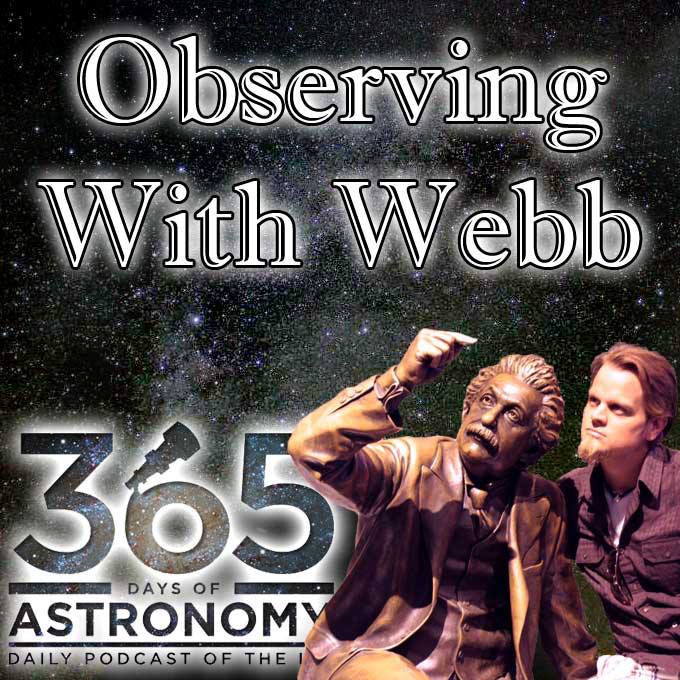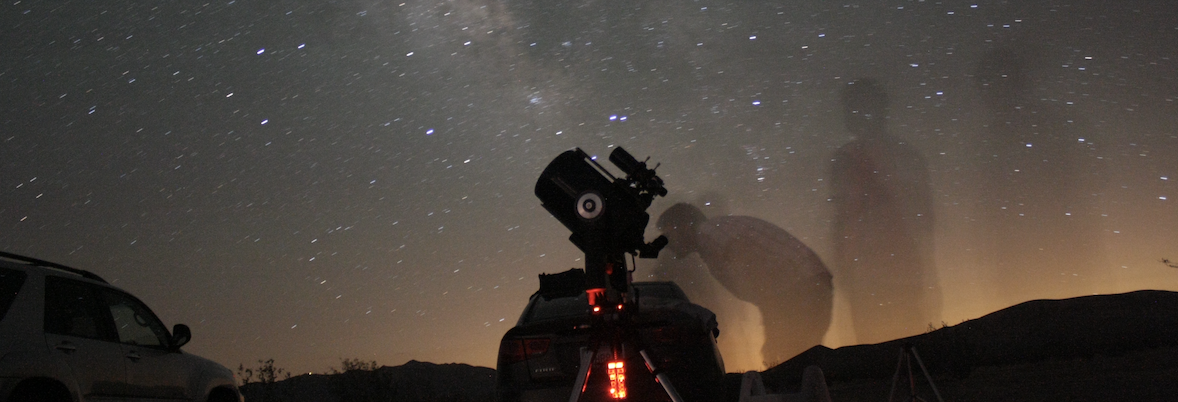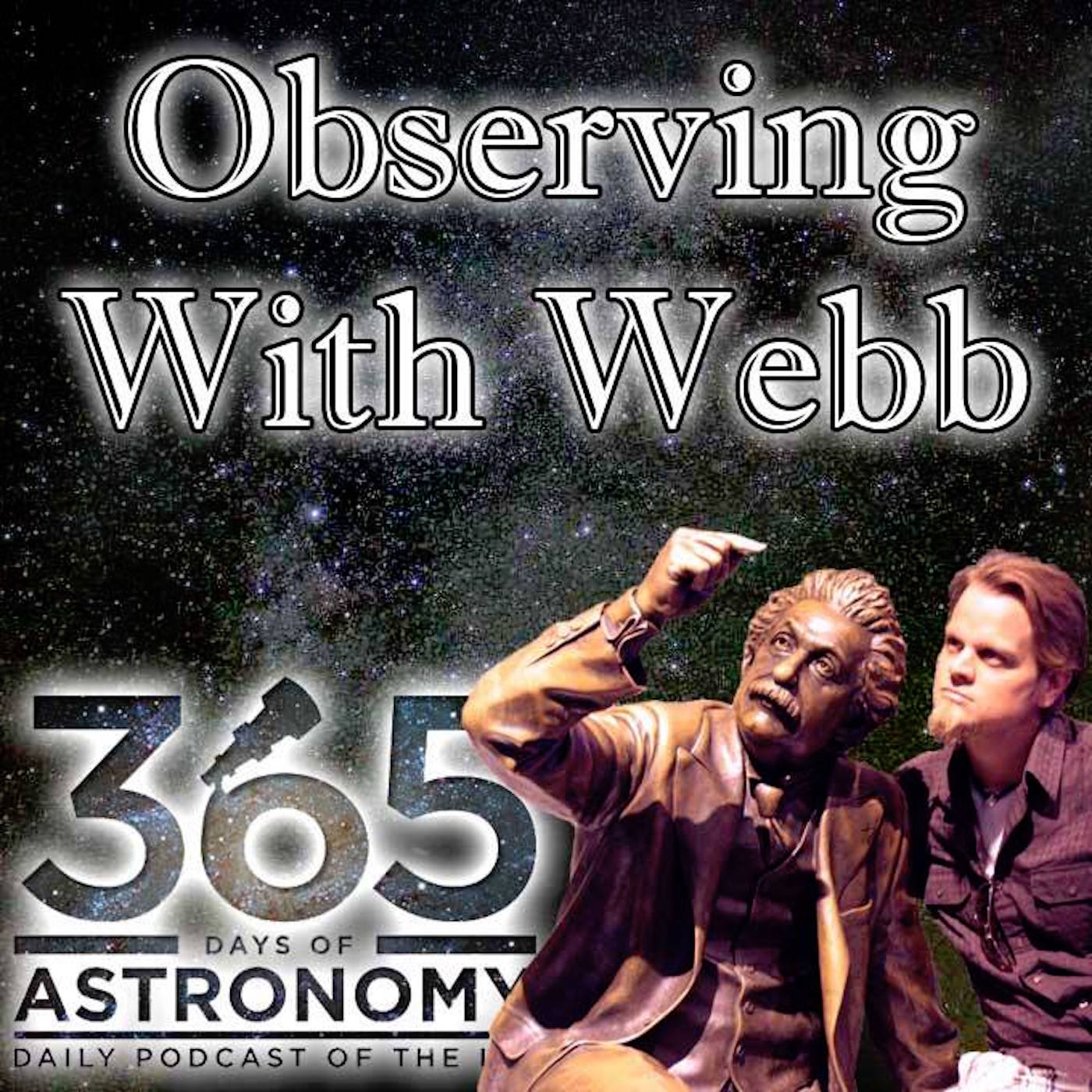Episodes

Monday Jun 02, 2014
June 2014
Monday Jun 02, 2014
Monday Jun 02, 2014
To listen to this email as a podcast, go to my Podbean page here
To see a video of this information (<10 min long) go to my YouTube Channel here
June is a boring month as far as events go, but there are 4 naked eye planets that you can see, 3 of them right after sunset. Plus, it’s pretty warm, making the observing much nicer.
PLANETS...well, the ones visible with your naked eye
Planets you can see around Sunset – Jupiter (W), Mars (SW), Saturn (S)
Planets you can see throughout the night – Mars (SWàW), Saturn (SàW)
Planets you can see in the Morning – Venus (E)
Mercury – Not really visible this month.
Venus – Venus will be very bright again this month in the morning toward the East. It rises pretty much after 4:00am and is about 20˚ above the horizon by sunrise. Closest to the Moon on the 24th.
Mars – Look in the SW after sunset or in the West before 2am and look for the visibly red “star”. It’s hanging out in Virgo this month. Close to the Moon on the 7th.
Jupiter – Jupiter is out until about 10pm. Look W after sunset for the brightest “star” currently right next to Gemini. Close to the crescent Moon on the 1st and 29th.
Saturn – Look in the South after sunset for the bright point that is Saturn, which moves to the west and sets around 3am. Closest to the Moon on the 10th. Try taking out your binoculars or telescope to find the rings at its side.
EVENTS...
First Quarter Moon – 5th (Visible until midnight)
7th – Close Encounter – Mars, Moon – Check out the Gibbous Moon in the South. Mars will be about 2˚ above it and very red.
10th – Close Encounter – Moon, Saturn – Look to the SE after sunset and you can see a Gibbous Moon, with Saturn about 4˚ up and to the right of it. If you live in the southernmost parts of Africa, you can actually watch the Moon occult or pass in front of Saturn!
Full Moon – 13th (Visible all night)
Last Quarter Moon – 19th (Visible from midnight into the morning)
21st – Summer Solstice – This is the longest day of the year in the Northern Hemisphere. There’s a bit of explanation as to why here.
24th – Close Encounter – Moon, Venus – Before sunrise, look to the East and find a thin crescent Moon. Venus will be about 2˚ to the left of the Moon, making a very nice morning pair worthy of a picture. The Pleiades are hanging out up and to the left, visible only around 4am until dawn starts.
New Moon – 27th (darkest skies)
29th – Close Encounter – Moon, Jupiter – At sunset, you may be able to see Jupiter about 12˚ to the right of the moon. Probably hard to find since dusk is pretty bright.
CONSTELLATIONS... (see sky map link at the bottom for a Star Map for this month – or ask Mr. Webb) Look straight up and you'll see...
After Sunset (sunset is around 8:30pm) – Bootes (The shepherd, kite, or ice cream cone). You can follow the arc of the Big Dipper’s handle to get to its brightest star Arcturus.
Midnight – Hercules – Extra Challenge! Look for M13, the Hercules Cluster in between two of Hercules’ “keystone” stars. It known as the best globular cluster in the northern skies. It will be a fuzzy spot in binoculars and will be even cooler through a telescope
Early Morning – Lyra, Cygnus, Lacerta – These are the Summer constellations, and since they are starting to rise in the morning now, that means that summer is on its way. Extra Challenge! Look for M57, the Ring Nebula in between two of Lyra’s stars. It is 2,300 light years away, which means we’re seeing what it looked like 2,300 years ago. The shell that you see is the remnants of the central star that blew up some 20,000 years ago. It has a donut-like appearance through a telescope. It’ll be easy to find, but tough to see in binoculars, so get the scope out for this one.
GENERAL CONSTELLATION FINDING TIPS:
Spring constellations: Bootes, Virgo, Leo, Corona Borealis, Hercules.
First find the Big Dipper in the North (a North Circumpolar Asterism that never sets) and look at the handle. Starting at the star closest to the “cup” part, follow the rest of the stars in the handle and follow the arc to Arcturus. Arcturus is the brightest star in Bootes the Shepherd. Some say he looks more like a kite, others say more like an ice cream cone.
Then, following the same “arc”, speed on to Spica. Spica is the brightest star in Virgo. Virgo’s a dimmer constellation, so you’ll be rewarded when you find her.
To the left of Bootes is Corona Borealis. This is a small collection of stars that make a crown, cup, or U shape in the sky.
To the left of Corona Borealis is the great constellation of Hercules. Hercules is the Hero of the sky and has a central “keystone” asterism, in which lies M13, the Hercules Cluster.
Lastly, Leo is a constellation consisting of a backward question mark (or sickle) and a right triangle to the left. Use the two Big Dipper “cup” stars that are in the middle of the Big Dipper and follow the line they make to the bright star Regulus, the brightest star in Leo.
Use a sky map from www.skymaps.com to help you out.

Thursday May 01, 2014
May 2014
Thursday May 01, 2014
Thursday May 01, 2014
May gives us a night sky of 4 planets! Mars and Saturn are the most prominent. More importantly, pay attention on the night of the 23rd when we will likely get a new meteor shower, if not a meteor storm!
PLANETS...well, the ones visible with your naked eye
Planets you can see around Sunset – Mercury (W), Jupiter (W), Mars (S), Saturn (SE)
Planets you can see throughout the night – Mars (SàW), Saturn (SEàSàW)
Planets you can see in the Morning – Saturn (SW), Venus (E)
Mercury – Tough to find, but easiest around the 22nd of May when it’s more than 10˚ above the horizon and sets almost 2 hours after the Sun. Look West after sunset and bring binoculars and a star map with Mercury on it, or a planetarium app on your phone. Close to an almost impossibly thin Moon on the 30th.
Venus – Venus will be very bright again this month in the morning toward the East. It rises pretty much after 4:30am and is about 20˚ above the horizon by sunrise. Closest to the Moon on the 25th.
Mars – This is a good time to try to take a look at Mars. The Earth has lapped Mars in the race around the Sun just last month, bringing us closer to it, but we are racing ahead of it, making it dimmer and smaller in the sky. Look in the South after sunset or in the West before 4am and look for the visibly red “star”. It’s hanging out in Virgo this month. Close to the Moon on the 10th.
Jupiter – Jupiter is out until about 11:30pm. Look W after sunset for the brightest “star” currently in the middle of Gemini. Close to the crescent Moon on the 3rd and 4th.
Saturn – Look in the Southeast after sunset for the bright point that is Saturn, which rises and moves to the SW by sunrise. Closest to the Moon on the 13th. Try taking out your binoculars or telescope to find the rings at its side. It reaches opposition this month, making it visible all night and the closest it will be to the Earth this year.
EVENTS...
3rd – 4th – Close Encounter – Moon & Jupiter – Find the crescent Moon in the West after sunset. Jupiter will be the bright “star” nearby.
First Quarter Moon – 6th (Visible until midnight)
10th – Close Encounter – Mars, Moon – Check out the Gibbous Moon in the South. Mars will be about 6˚ to the left of it and very red.
13th – Close Encounter – Moon, Saturn – Look to the SE after sunset and you can see a pretty much Full Moon, with Saturn about 5˚ to the left of it.
Full Moon – 14th (Visible all night)
Last Quarter Moon – 21st (Visible from midnight into the morning)
23rd – 24th – NEW METEOR SHOWER – Good news for North Americans. You’ll be able to see this new meteor shower, probably called the Camelopardalids. It’s new because a comet had an encounter with Jupiter that nudged its orbit near Earth’s, leaving a trail of dust that we will plow through. We don’t know how many there will be per hour, since this is new, but they range anywhere from less than 100 to up to 400 (a meteor STORM!). We’ll see. You’ll also see more the later you stay up. More info here
Some advice for watching:
Find a dark location and lie down in a reclining chair or swimming pool floaty
Look North, and keep a wide eye. That is where the radiant is - where the meteors will appear to be coming from.
Check the weather to see if the skies will be clear (weather.com has a good map here)
Adapt your eyes to the dark by staying away from light sources or using a red light if you need to look at a star chart or not trip over something.
If you’re feeling extra nerdy, do a scientific meteor count. More info at S&T and IMO
25th – Close Encounter – Moon, Venus – Before sunrise, look to the East and find a thin crescent Moon. Venus will be about 3˚ below the Moon, making a very nice morning pair worthy of a picture.
New Moon – 28th (darkest skies)
CONSTELLATIONS... (see sky map link at the bottom for a SkyMap for this month – or ask Mr. Webb) Look straight up and you'll see...
After Sunset (sunset is between 8:00pm and 8:30pm) – Ursa Major’s legs, Leo, Leo Minor -
Midnight – Bootes – find the Big Dipper’s handle, and starting from the inside of the handle, follow the arc that those four stars make past the last star in the handle about 30˚ or three fist-widths to the next very bright star you find which is Arcturus, the base of the constellation Boötes. Hence astronomers use the phrase “Follow the Arc to Arcturus”
Early Morning – Hercules, Lyra, Cygnus – These are the Summer constellations, and since they are starting to rise in the morning now, that means that summer is on its way.
GENERAL CONSTELLATION FINDING TIPS:
Spring constellations: Bootes, Virgo, Leo, Corona Borealis, Hercules.
First find the Big Dipper in the North (a North Circumpolar Asterism that never sets) and look at the handle. Starting at the star closest to the “cup” part, follow the rest of the stars in the handle and follow the arc to Arcturus. Arcturus is the brightest star in Bootes the Shepherd. Some say he looks more like a kite, others say more like an ice cream cone.
Then, following the same “arc”, speed on to Spica. Spica is the brightest star in Virgo. Virgo’s a dimmer constellation, so you’ll be rewarded when you find her.
To the left of Bootes is Corona Borealis. This is a small collection of stars that make a crown, cup, or U shape in the sky.
To the left of Corona Borealis is the great constellation of Hercules. Hercules is the Hero of the sky and has a central “keystone” asterism, in which lies M13, the Hercules Cluster.
Lastly, Leo is a constellation consisting of a backward question mark (or sickle) and a right triangle to the left. Use the two Big Dipper “cup” stars that are in the middle of the Big Dipper and follow the line they make to the bright star Regulus, the brightest star in Leo.
Use a sky map from www.skymaps.com to help you out.

